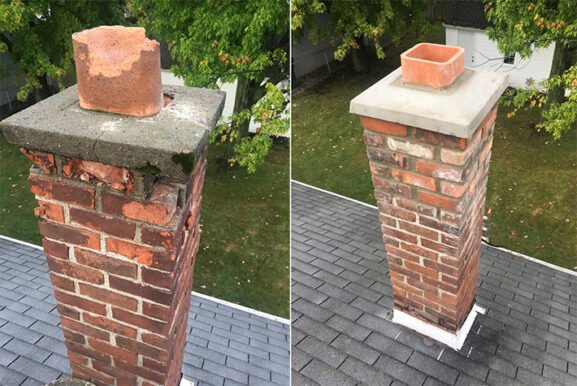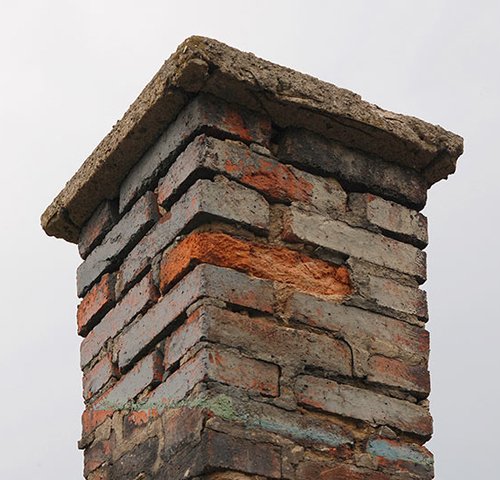Understanding Chimney Brick Repair Cost and What Homeowners Should Expect
Key Takeaways
- Chimney brick repair costs can vary widely based on the extent of damage, materials, and accessibility.
- Neglecting small cracks or mortar gaps can lead to more expensive structural issues over time.
- Regional labor rates and the type of brick or finish can significantly influence repair pricing.
- Early intervention and professional inspections help keep long-term costs down.
Why Brick Chimneys Need Prompt Attention
Brick chimneys are both functional and aesthetic assets to a home. They vent smoke and combustion gases safely while adding charm to your property. However, bricks and mortar are constantly exposed to heat, moisture, and seasonal freeze-thaw cycles. Over time, these elements cause cracks, crumbling mortar, or even leaning structures.
What starts as minor wear can quickly become a safety concern. Water infiltration through damaged mortar joints can lead to internal chimney liner damage or affect surrounding walls. As the issues worsen, so does the cost of repair. Addressing deterioration early helps homeowners avoid expensive rebuilds later.
Common Repairs and Their Associated Costs
Chimney brick repair is a broad term, and pricing depends heavily on the specific service required. Here are some of the most common brick-related chimney repairs and their general cost ranges:
Spot Brick Replacement
When only a few bricks are damaged—due to spalling, cracks, or impact—spot replacement is often sufficient. A mason will remove the damaged bricks and carefully install matching replacements.
Estimated cost: $200 to $600 depending on how high up the chimney the repair is and how many bricks are involved.
Tuckpointing and Repointing
Mortar joints wear out long before bricks do. Repointing (sometimes called tuckpointing) involves removing deteriorated mortar and replacing it with fresh mortar. This helps seal the chimney and reinforce its structure.
Estimated cost: $8 to $30 per square foot. Total cost often ranges between $500 and $2,500 depending on chimney size and location.
Chimney Crown Repair
Though not technically part of the brick structure, the crown protects the bricks beneath from water infiltration. Cracked crowns can accelerate brick damage. Simple crown repairs may involve sealant, while full replacements are more costly.
Estimated cost: $150 to $400 for sealant application, $600 to $1,200 for full crown rebuilding.
Full Brick Rebuilds
If large sections of your chimney are failing or leaning, a full rebuild may be required. This is labor-intensive and often includes tearing down and rebuilding from the roofline up—or even from the foundation in extreme cases.
Estimated cost: $2,000 to $10,000 or more depending on chimney size and severity of damage.
Factors That Influence the Final Repair Bill
No two chimneys are exactly the same, and many variables affect the final cost. Understanding these factors can help you better estimate your own repair needs:
- Chimney height and accessibility: Roof pitch and chimney height affect how difficult the work is. Harder access means higher labor costs.
- Type of brick: If your home uses custom, antique, or non-standard bricks, matching them increases material costs.
- Extent of damage: A few cracks require far less time and materials than widespread structural failure.
- Location and labor rates: Urban areas or regions with high demand for masonry services (like the Northeast) may charge more.
- Weather and timing: Repairs done in winter may need special materials or slower curing times, adding to the bill.
In general, it’s smart to request an on-site inspection from a licensed chimney mason to get a personalized quote. National averages are only a starting point.
How To Recognize Early Signs of Damage
You don’t have to be a chimney expert to spot problems early. Here are clear indicators that your brick chimney needs attention:
- Gaps between bricks or crumbling mortar
- Flaking or spalling bricks
- White stains (efflorescence) caused by water movement through brick
- Leaning chimney stack
- Water leaking near your fireplace or chimney base
These signs signal moisture intrusion, structural shifting, or thermal damage. Acting quickly can minimize repair costs and protect your home’s value.
Why DIY Brick Repair Isn’t Always a Good Idea
Homeowners may be tempted to patch up small chimney cracks using mortar mix or sealant from a hardware store. While these may temporarily mask the issue, they often don’t address the root cause or meet fire safety codes.
Improperly matched mortar can actually damage historic brickwork, and poor sealing can trap moisture inside. Additionally, chimney work requires working at height and around fragile masonry—conditions that can be dangerous without proper gear and experience.
For these reasons, experts recommend professional inspections and repairs. According to the Chimney Safety Institute of America (CSIA), certified technicians are trained to spot underlying problems that DIY approaches might miss.
When Is the Best Time To Schedule Brick Repairs
Spring and early summer are typically the best times to schedule chimney brick repairs. The weather is dry and warm enough for mortar to cure properly, and you’re less likely to be using your fireplace during this season.
Booking early in the year also helps avoid the rush that comes with fall chimney inspections. Many homeowners wait until cooler months to address repairs, causing scheduling delays and higher costs due to demand.
Final Thoughts on Planning and Budgeting for Chimney Brick Repairs
Repairing a brick chimney is more than just a cosmetic fix—it’s essential for home safety, structural stability, and long-term cost savings. Whether you’re dealing with a few cracks or need a full rebuild, knowing what impacts the cost can help you make informed decisions. When in doubt, schedule a professional inspection and get a written estimate. Investing in timely brickwork now helps prevent costly structural headaches later.

